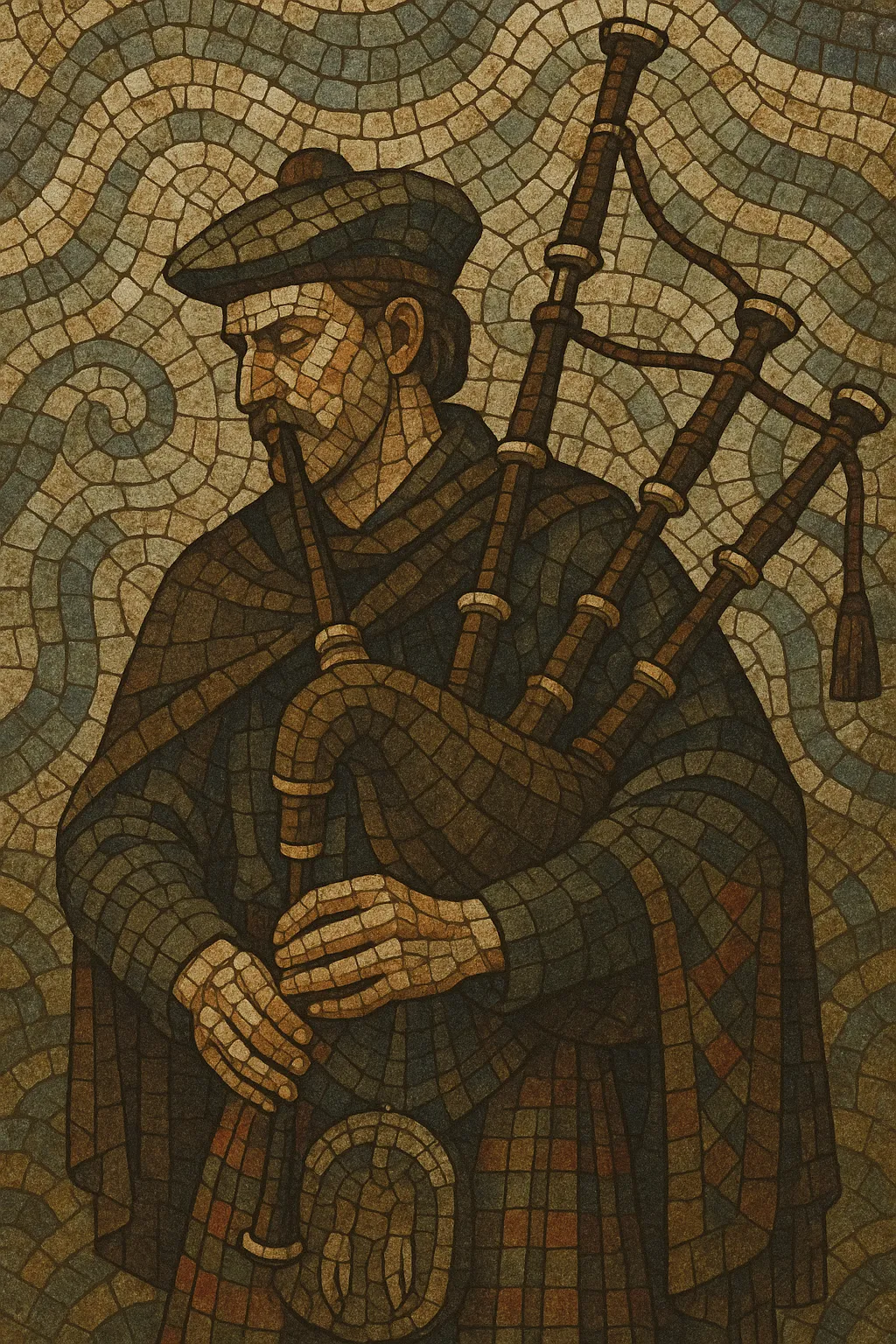Pìobaireachd (often anglicized as pibroch; Gaelic for "pipe music") is the classical art music of the Great Highland bagpipe. It is characterized by a theme-and-variations form built on a ground (urlar) followed by increasingly elaborate variation cycles.
The music is typically non-metric or flexibly pulsed, with expressive pacing, extensive ornamental movements (such as taorluath and crunluath), and a continuous drone from the bagpipe’s three drones. Tunes are often categorized as laments (cumha), salutes, gatherings, and battle pieces, reflecting ceremonial and commemorative functions within Highland culture.
Pìobaireachd is traditionally transmitted both through staff notation and through canntaireachd, a mnemonic vocal system that encodes melody and ornamentation using syllables. The repertoire emphasizes modal melody (commonly mixolydian on the bagpipe’s A) and deep phrasing over harmonic progression.
Pìobaireachd emerged in the Scottish Highlands during the 17th century as the "ceòl mòr" (big music) of the Great Highland bagpipe. Chiefly piping families, especially the MacCrimmons of Skye, developed and taught the idiom for the courts of Highland chiefs. The music served ceremonial, commemorative, and martial purposes, with tune types such as laments, salutes, and gatherings.
Transmission relied heavily on oral tradition and canntaireachd, a vocal solmization that encodes pitches and ornaments. The late-18th and early-19th centuries saw significant documentation, including the Campbell Canntaireachd manuscripts (c. 1790s) and Angus MacKay’s landmark 1838 publication "A Collection of Ancient Piobaireachd or Highland Pipe Music," which helped standardize settings and ensure wider dissemination.
After the suppression of the clan system in the 18th century, pìobaireachd remained alive through military and competitive piping. The late-19th and early-20th centuries brought a revival led by competitions (Northern Meeting, Argyllshire Gathering) and the founding of the Piobaireachd Society (1903), which promoted research, standardized editions, and encouraged performance.
Today, pìobaireachd is a cornerstone of solo competitive piping worldwide. Scholarship continues to re-examine sources and variants, while performers balance historically informed phrasing with modern technique. The tradition remains rooted in the Great Highland bagpipe’s sonic world—endless drone, modal melody, and expressive, ornament-driven variation.
Use the Great Highland bagpipe with one bass and two tenor drones tuned to A. Aim for stable tuning and a rich drone bed. The chanter scale is essentially mixolydian on A, with characteristic bagpipe intonation.
Compose a ground (urlar) that states the core melodic line with clear phrasing. Plan a sequence of variations that elaborate the theme: common pathways include dithis/siubhal type variations, then taorluath variations, and a culminating crunluath (often with doublings). Consider variants (e.g., fosgailte, a mach, breabach) if they suit the theme.
Design ornaments as structural movements, not mere decoration. Integrate doublings, grips, throws, taorluath and crunluath movements precisely and musically. Ensure fingerwork is clean and consistent with accepted piping technique.
Treat the ground with flexible pulse and expressive rubato; let phrasing, breathing, and cadential points shape tempo. As variations progress, increase rhythmic clarity and intensity while preserving the melodic identity of the urlar.
Sketch in canntaireachd to map melody and embellishments before staff notation, or draft directly in modern pipe notation. Keep harmony implicit—the drones supply constant tonal grounding—so focus on modal contour, cadence tones, and long-phrase architecture. Rehearse slowly, refine phrasing, and test pacing in a large acoustic, as pìobaireachd is a solo, room-filling art.


